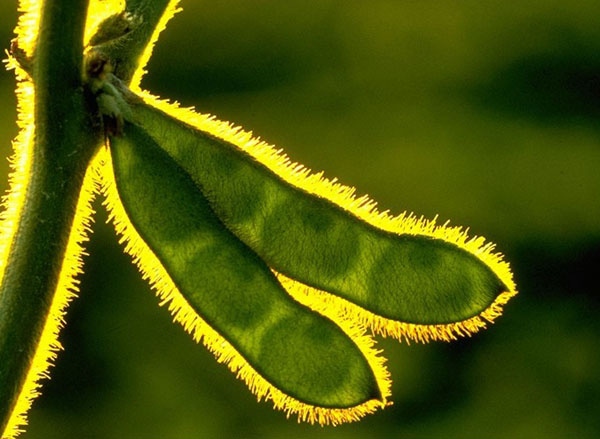
Think different“Money can’t buy you yield” is the refrain of the second installment of United Soybean Board (USB)-funded yield research.“Farmers need to manage yield by field; identify which inputs deliver the best ROI in which specific environments,” says Seth Naeve, the University of Minnesota agronomist who led the second three-year installment of intensive soybean yield research.
March 13, 2015

Management, more than inputs, is still the key to higher soybean yields, according to the latest USB-funded university research. “You can’t buy higher yields; you still have to work for them,” says Seth Naeve, the University of Minnesota agronomist who led the intensive soybean yield research. The research tested inputs marketed as preventatives, and deployed them in the field as pre-timed applications rather than as a part of a more actively managed system.
“The study focused on which baseline practices and products all farmers should use, rather than what works in individual situations,” Naeve says. “Some treatments are important in some situations, but aren’t necessarily required for everyone.
“Foliar insecticides and fungicides came closest to delivering a ROI, of all inputs tested,” Naeve says, “when used across the board on all acres, preventatively at predetermined times. These products would have performed better and at a MUCH greater ROI had they been applied under pest pressure as indicated by scouting.”
SOYA (Systematic Optimization of Soybean Yield and Quality) tested the best varieties on high-yielding sites.
It’s natural to want a blanket approach to reducing risk, and we’ve grown accustomed to thinking that way, Naeve says. But today’s crop prices don’t support that expenditure, he adds. “Strong genetics and narrow rows continue to be the two main yield drivers.”
Yield drivers
Variety yield differences existed in 70% of the research site years, highlighting the difference among the highest yielding cultivars available.
Variety selection is still at the top of the list as a yield influence. But you don’t need to vary input use by cultivar, the research found. The SOYA research chose only the highest-yielding varieties available and high-yielding test sites. “Inputs did not increase yields of any of the varieties more than any other. Therefore, farmers needn’t consider managing varieties differently in most cases,” Naeve says.
Narrow soybean rows (7.5-10 inches) continue to be the single management practice with the best yield payoff, the research finds. This second installment of the multi-state USB “Kitchen Sink” yield study found a 3.1-bushel yield boost in narrow rows compared to 30-inch rows on 14 site-years in Minnesota and Kansas. So says Kraig Roozeboom, K-State University cropping systems associate professor, who led that part of the research. “The row-spacing yield response was independent of added inputs such as fungicide or seed treatments,” he says.
“The conventional wisdom among soybean agronomists is that narrow rows close the canopy earlier, shading out weeds sooner and capturing more sunlight. Narrow rows maintain a higher percentage of planted population; there’s less attrition. They’ve proven themselves since 1966,” Naeve says. “I get more questions about this, perhaps since guidance technology allows people to ‘double plant’ to have narrower rows without adding new equipment.”
A series of Iowa Soybean Association On Farm Network on-farm replicated studies also confirmed the benefits of narrow soybean rows.
Seeding rates. As long as final soybean stands were 78,000 plants per acre before harvest, higher seed rates did not add to yields. “You don’t need super heavy stands beyond what’s required to have those pre-harvest stands,” Naeve says. “Yield response to population was non-existent or small in low-yielding environments, indicating other yield-limiting factors,” the report concludes.
An online calculator to help you identify the best seeding rate for your variables is available from the first round of USB yield research.
“As long as soybean stands were above 78,000 plants before harvest, in high-yielding environments, higher seeding rates did not add to yields,” Naeve says. “That’s one reason the inputs didn’t add much, these were good environments, the best cultivars, and stands were adequate.
“We don’t recommend seeding rates below 125,000, but our data indicate that excellent yields can come at very low final populations. Higher populations will probably stabilize your yield by 1-2 bushels per acre over all your farms, Naeve says.
Although high input levels increased yield, grower ROI “would likely be negative with today’s commodity prices,” the researchers concluded. Purchased inputs have the most impact when they’re applied on a field-by-field basis,” Naeve says. “No purchased inputs delivered across the board as yield ‘insurance’ penciled out in this research.”
The bottom line on this SOYA research is that it’s hard to buy extra yield. “Farmers love the ‘insurance concept,’” Naeve says. “But the reality is there’s not much economic insurance in these inputs, especially when compared to solid management practices like scouting, and following up with appropriate inputs as needed.”
About this research
Called Systematic Optimization of Soybean Yield and Quality (SOYA), the “updated Kitchen Sink” research spanned 60 environments in nine states during 2012, 2013 and 2014. That’s at least two sites per state, in Arkansas, Illinois, Indiana, Iowa, Kansas, Kentucky, Michigan, Minnesota and Wisconsin.
Soybean plots with standard university-recommended fertilizer and weed control practices without additional inputs were compared to plots where seed treatments, foliar fertilizer, foliar fungicide, foliar insecticide, nitrogen fertilizer and defoliants were added to that base.
Results were tabulated by region, by cultivar and by seeding rate.
In the year ahead, graduate students and one post doctoral student will mine the SOYA data for additional physiological nuances, such as canopy closure, light interception, seed size and weight, protein and oil content, and the environmental drivers behind any treatment responses.
The study’s focus was which baseline practices and inputs all farmers should use, not what individual farmers should do.
About the Author(s)
You May Also Like



